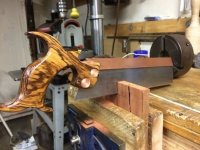I have my computer set to bring up Festoy FOG site everytime i plug into Safari. It is interesting that the first three sites that showed on my "Replies" were about tiny details.
This site is all about the not so tiny details of owning, and using a fine tool for mundane practices, or not using such a fine tool to accomplish a fine result.
The first site was all about making a fine cabinet and achieving a very fine result with the addition of the tiniest part in the design. That tiny little triangle just set the whole design into a whole new dimension of appeal.
The second project on the list was all about a tool cabinet. It could well have been a run of the mill wooden cabinet to hold tools, but the artist in the craftsman came out in the final touch of how carefully he made those tiny little tool holders. He did not need to be so careful, but the care in fitting and placement of the tools set that tool box into a great new dimension of eye appeal as well as practicality.
It is the tiny little details that have a tendency to set off every project. I have not arrived at the design abbility to really set off my wood projects, but I often had a lot of fun with my masonry projects along the way. There were the projects that were copies of so many other projects. They were the projects that we did time after time and we made money. Not much as far as the memories were concerned. Every now and then. I would have the honor to build something where I had free riegn to add little bits and pieces to to the design. I had fun with those projects. Not as much profit in the build maybe, but the fun was in the finished piece with the little extra details and the enjoyment shown by the customer.
And, by the way, even with such a backbreaking job as masonry, I bought some very fine tools. Nobody ever knew that WHS and JTS trowels cost a little bit more than a Rose or a Marshaltown. They were top of the line. Nobody could tell by looking at the tools after they had been used for so many repetitions and so many cleanings. They were only flat pices of metal with wooden handles that were used to change the location and/or form of a very gloppy type of material in combination with very hard and, by themselves, uninteresting blocky types of units together into an interesting form. Those fine tools that I used, even tho of greater expense, did add to the over all profit in that I could increase my production to a point well beyond the added cost of he tools. Because I could increase production and come out ahead on the bottom line with my estimates, I could afford those tiny little extras that added enjoyment for both myself, but the more important customer. In this case, the craftsman has, I am sure, increased his enjoyment in owning and displaying a very fine Bontz saw. If he enjoys using the tool (I wish my own skills were at a level where i could afford such a saw and put it to good use and add the enjoyment for others that that saw might make possible for me to do the little extras), I am sure it adds to the qualty of finished project. Ohers who have chimed in have either recognised, or not recognised the value of enjoyment in using fine tools.
For those who can use the cheapest tools to do fine craftsmanship, I applaud them as well. One of the finest crafsmaen I have worked with often used makeshift tools to arrive at very fine results. One of the tools he used that impressed me was the use of a simple piece of scrap wood with a big headed nail in the end. With a small file, he shaped the head of the nail and with that throw-away tool, he would create the very finest beading to match architecture of a very old (pre 1776) house. He made other tools for use on the same job that sometimes headed to the scrap heap when finished, but the craftsmanship was exquisit.
Tinker

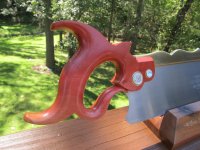
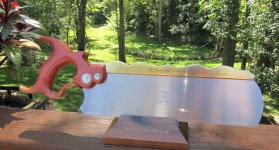
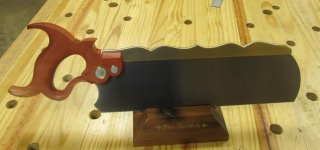
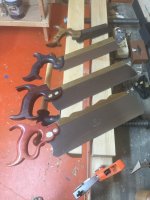

![DSCN0993[1].JPG](/data/attachments/27/27722-07dfe4b6ea412c9d9f1ac125dc744a12.jpg?hash=OTpG3Xy0pm)
